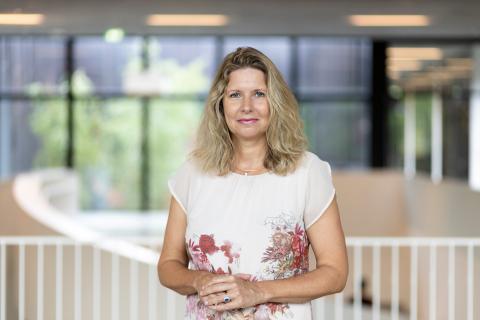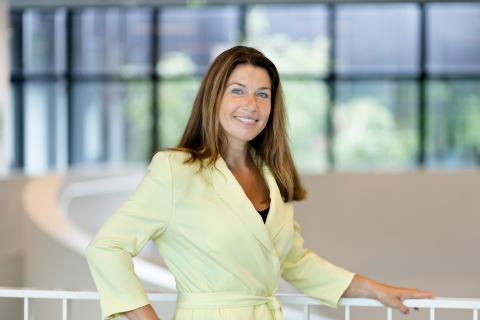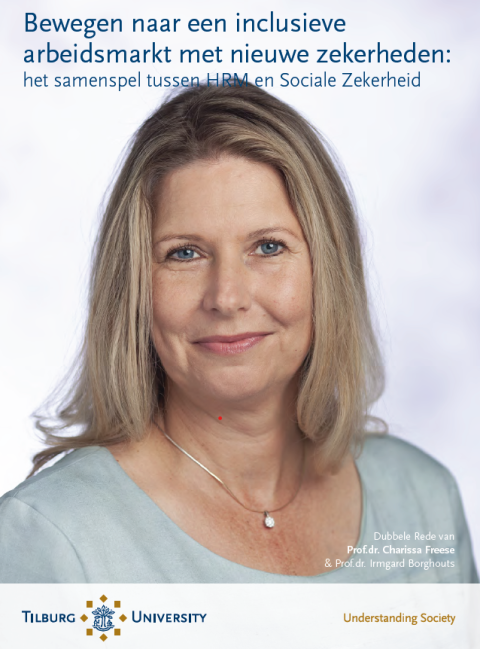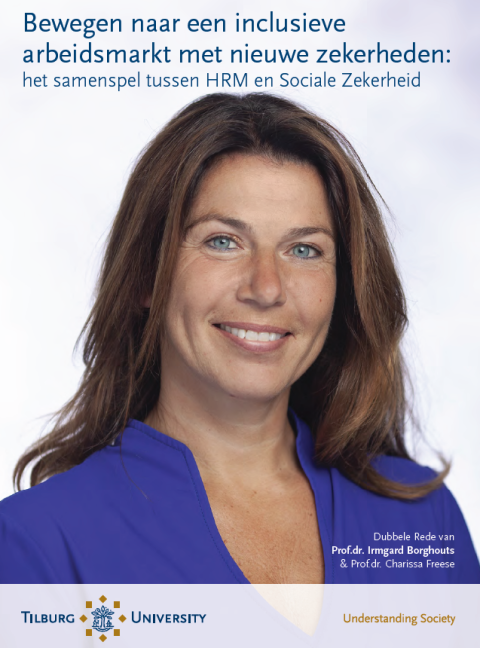Towards a dynamic job market: “Look at the world people live in, otherwise we won’t get there”
Sharing a research chair for one day a week, combining two different professional fields – social security and human resource management – in one appointment. How did that happen and how do you approach it? Labor psychologist Charissa Freese and labor market and social security expert Irmgard Borghouts have seized the opportunity offered by the Instituut Gak with all four hands, for the express purpose of breaking down barriers in the job market. The factor that unites them is the human being behind the work, which also counts for their own workplace.
Photography: Maurice van den Bosch
They got to know each other at Tilburg University, at the interdisciplinary research institute for the labor market ReflecT, under the leadership of Professor Ton Wilthagen. “We found out that you look at the same phenomenon from a different perspective when you’re a psychologist, like me, than an econometrist would, for example,” Charissa Freese explains. “It may be quite difficult to work together, but it’s also very valuable. In 2015 at the Dutch HR conference, Irmgard and I discovered that we were interested in each other’s work, and a year later at a conference in Sydney, we had an ever more exciting conversation. Irmgard was looking at vulnerable groups participating in the job market from the government’s perspective, and I wondered, what should employers be doing? That’s when we saw that we had to bring our disciplines together.”
Separate worlds
“We found we were really well suited to each other,” Irmgard Borghouts adds. “We are both ready to listen to the other person and really try to understand each other. Our disciplines are hermetically sealed worlds, both in the academic world and in practice. But we have to try to move towards each other and work as a team. It takes longer before you reach that stage, but you can go a lot farther.”

Charissa Freese: if you take a broad view you can really benefit from the other person’s insights
One of the obstacles is the use of specialized terminology, Freese says. “One of Irmgard’s keywords is ‘employment security’. In HR studies, the word ‘employability’ approaches the meaning, but is slightly off. If you’re holed up in a silo mentality, you’ll never get there. But if you take a broad view you can really benefit from the other person’s insights. It’s very enriching to learn to think from the other perspective.”
Another obstacle to combining disciplines is that it’s difficult to publish, even though the number of interdisciplinary scholarly journals is increasing. Freese: “Sometimes our collaborations are thrown back in our faces, with the criticism like ‘can’t you do that on your own?’ Single-authored publications are still the norm in our fields. But what I can say on my own is simply not as good as what we can say together.” Borghouts: “At the same time, each of us is still pursuing her own thing – only, when we get together, we always come up with something new.”
Job market as Achilles’ heel
Professional practice is the biggest winner of interdisciplinary collaborations, which is the ultimate reason these academics are so devoted to it. Borghouts: “The job market is the Achilles’ heel of just about everything. It is inextricably linked with all the challenges that we are facing. You have to get that properly functioning first.”
With the help of PhD students and postdocs, they want to have an impact on both academe and society. “We’re just getting started, but we’re now ready to go much deeper into it,” Borghouts says. “With a research team that really brings together different perspectives, we can demolish that silo mentality, in professional practice too, hopefully for many people.” Freese: “We can invite participants from employers, trade unions and government, and still conduct an open discussion. That’s when you notice that, if people are open-minded, they develop greater mutual understanding, which leads to solutions.” For those reasons they are also trying to place their findings in Dutch-language journals and publications in the field.
Rough sketch
Back to Australia in 2016. During their spare time at the conference in Sydney, Borghouts and Freese sketched out a plan for the job market. The rough sketch from 2016 has since then grown into the ‘Transitional Inclusive HR labor market model’ and forms the basis of their teaching and research. The core idea is that the labor market functions better according to the degree people are better able to make four kinds of transitions: from inactivity to work, from contract to contract, from job to job, and to the future of work, work that for example changes because of digitization. In order to equip people properly, all the stakeholders in the job market have to work together with a view to the long term and each other’s interests. Don’t just look at the world of systems, but actually look at the world that people live in, otherwise we just won’t get there – that’s the message.
Irmgard Borghouts: We have to be more proactive and act preventatively instead of always acting curatively

When asked for concrete ideas and advice, the two academics both start talking at once. About labor shortages (which have been around for a long time and are here to stay), the right way of using self-employed individuals, the pros and cons of part-time workers, the need for caregivers, and the under-employment of those with an occupational disability. Many of these ideas can be found in their inaugural address: Towards new securities on an
inclusive labor market: the interplay between HRM and Social Security (see below, second halves of pdfs).
What is of primary importance at this time is the human being behind the work and the view of the future. “Look first and foremost at someone’s talents, reason from their skills, instead of from the job description, in order to get the right person in the right place,” Freese says. “And for the long term, we have to think hard about what kind of employment relationships are suitable for both the sector and the people involved.” Borghouts: “We also have to be more proactive and act preventatively instead of always acting curatively, when it reaches a crisis.”
Interaction with professional practice
These are big challenges, but it’s especially their interaction with professional practice that gives them their energy. By setting up the new Academic Collaborative Center for an Inclusive Labor Market and the People Management Center for the HR sector, they are not only transferring knowledge to those in practice but also receiving research questions.
“Do you see these chairs?”, Freese points to their shared office. “They were purchased by a colleague from the PMC for our guests. This beautiful poster is also hanging on the wall for a reason: nurses from higher and secondary vocational schools who are enrolled in our program mapped out what has to happen. This poster is seen by all our guests and colleagues, but is also hanging in hospitals.”
Borghouts: “Something else that’s unique: for our new course Inclusive HR Management we expected an enrolment of about 35, but we ended up with around 100, both from social science and law faculties. That meant extra workload pressure over the past year, but it gives you a real kick when something you thought up really takes off. The best papers were from students who took an interdisciplinary view of the material. They were so good they gave me goosebumps.”


Date of publication: 16 September 2022
